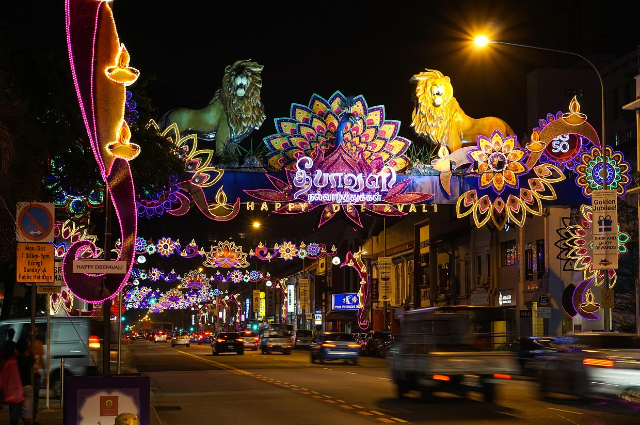
Cultural festivals, woven into communities in continents, are much higher than calendar-bound ceremonies-they represent the interaction between geography, community, and trade, which deeply form landscapes and economies. Their surroundings, sizes, and time often reflect old traditions and modern urban planning, which causes them to equate topics for geography and economists. The effect of festivals provides from symbolic urban sites to solve rural markets, and the economic wave effect can last long after the final fireworks fade.
The festivals come from geography, immersed in history – fixed by astronomical phenomena or seasonal cycles, and other times are cast of urbanization and migration. For example, Gion Matsuri is kept from Japan annually in Kyoto, utilizing historical roads as a living heritage, connecting the physical geography of the city’s places to centuries-old rituals. On the other hand, India’s Riverside Maha Kumbh Mela in Prayagraj Riverbank converted to a temporary city, hosted millions, and changed each cycle of the landscape. These events stay in place, using the expansion of the countryside to create local websites, city blocks, and the expansion of the countryside for joint collection, storytelling, and reinforcement of identity. Urban centers recognize their role as a crucible for cultural life, quickly using festivals as strategies for revival and branding. Programs such as the Edinburgh Festival Fringe or the Manchester International Festival run city classes, historical theaters, and public parks in the short world where art, performance, and trade are renovated. Through a geographically objective, these festivals map new uses for well-known places, a reference point for local pride and urban development is often.
Focusing on the Jaipur Sahitya festival shows the influence of how a single cultural program can bring about adequate economic and social changes within its territory. This festival attracts hundreds of thousands of national and international visitors annually, inspires the tourism sector in Jaipur, and contributes significantly to local businesses such as hotels, restaurants, and craft markets. During the festival season, housing prices and many companies report months of advance orders, which creates an estimated impact in dozens of crores for the city every year. This influx of visitors indicates an increase in demand for various hospitality and retail services, covering employment, skills development, and new entrepreneurship opportunities for the local workforce, including short-term employment in phenomenon management, transport, and safety.
In addition to direct economic benefits, the Jaipur Sahitya festival stimulates long-term permanent growth of placing Jaipur as a center for intellectual, educational, and cultural tourism. Literature, art, and the ongoing connection to the global literary society enrich the cultural landscape of the city, making it a gathering point for literary tourism in India. The event encourages community participation and pride by offering a platform for local writers, artists, and craftsmen, who help preserve regional traditions and crafts through an increase in market risk, to reach a wide public. The festival’s multidisciplinary programming – which acts as a model for integrated literature, music, and art – creative clustering, promotes both urban branding and cultural protection. It creates an inclusive public space for dialogue on contemporary issues, which helps maintain Jaipur’s heritage and identity, while also fostering financial wealth and regional pride.
From an economic point of view, festivals represent multipliers and nodes in local economies. Direct effects include ticket sales, food, housing, transport, and an increase in revenue from traditional goods. The indirect effect reinforces employment generation, infrastructure investments, and expansion of local tax bases. Festivals also spend on consumers; Purchases of fabrics, gifts, decorations, and festivals related to festivals grow rapidly in festivals, promoting production and sales in the sector. These expenses are not limited to large cities; Local markets and small businesses often see a high-profit margin during the festival months. Micro, small, and medium-sized businesses – especially benefit from spikes in demand, using festivals as channels for development opportunities and innovation.
In addition to revenues, festivals create cultural capital – abstract heritage, united and promoted social harmony. Events like Diwali in India or an Irish dance party in Ireland shed light on how the geographies of festivals support tradition and fellowship by promoting economic vitality. By taking advantage of various geographical substances – urban or rural, metropolitan or tasty – these events can target development, inclusion, and stability, making the culture itself a pillar of economic and social prosperity.
International festivals also serve as windows for cultural exchange, invite global participation, and attract attention to unique local traditions. The Chinese New Year’s global access, the creative procedure of the Burning Man, and the performance variety of the Edinburgh festival’s fringe acts like all nodes where geography meets the creative economy, allowing local cultures to interact at international stages.
The geography of cultural festivals forms an intricate their character and influence, which brings the thread to place, tradition, and trade together into heavy financial tissue. Whether to revive the core of the city, change the riverbank, or maintain the village bread, use your geographical surroundings to support festivals and wealthy communities. Their technical economic influence – by becoming workplaces, revenues, and commercial development – meets their importance as a development engine. At the same time, their cultural resonance heritage helps preserve open areas for united communities and innovation and exchange. In a quickly paired but culturally diverse world, the geography of festivals will continue to be both a celebration and a catalyst for permanent economic change.
References
- https://www.irishdanceparty.com
- https://timesofindia.indiatimes.com
- https://espace.mmu.ac.uk
- https://compass.onlinelibrary.wiley.com
- https://www.linkedin.com
